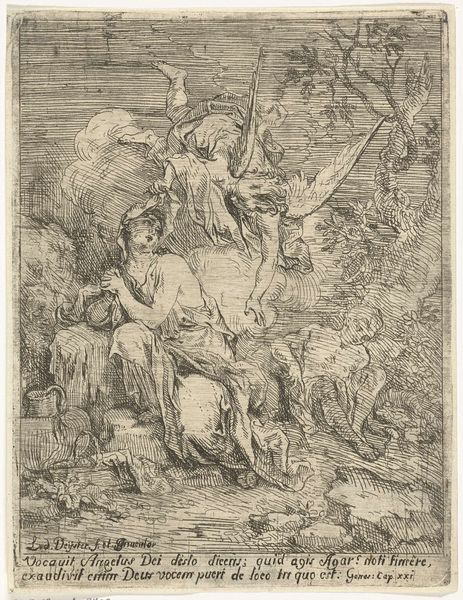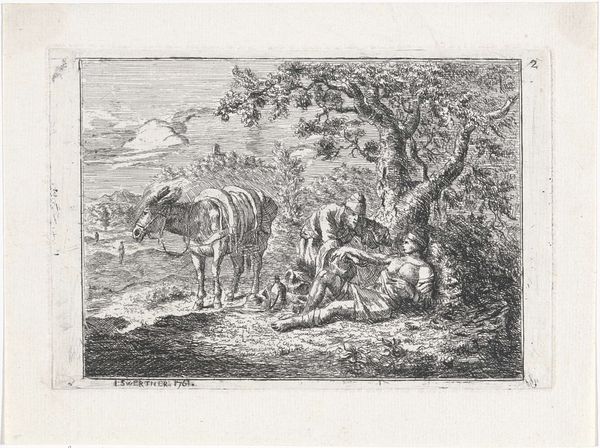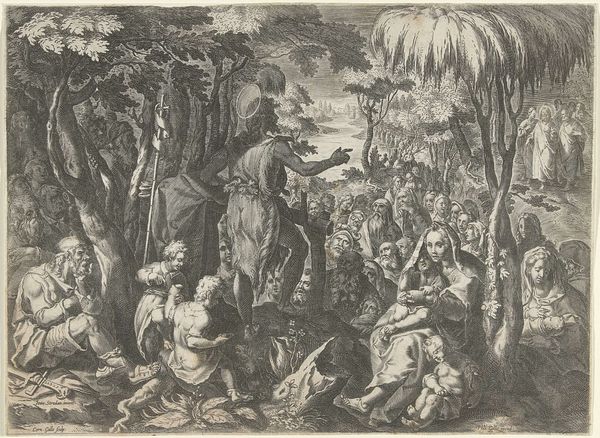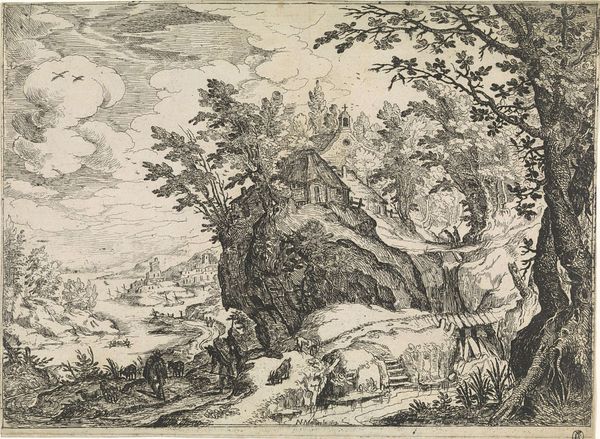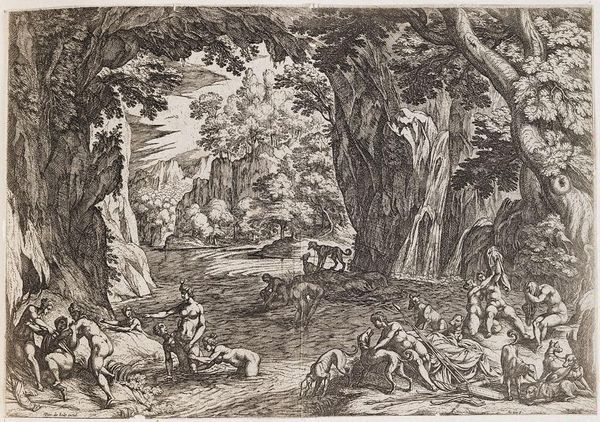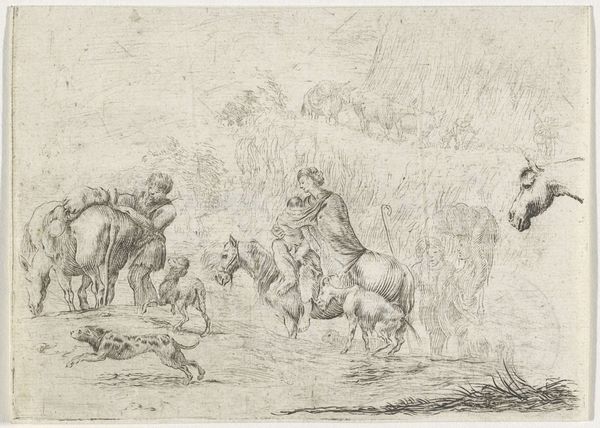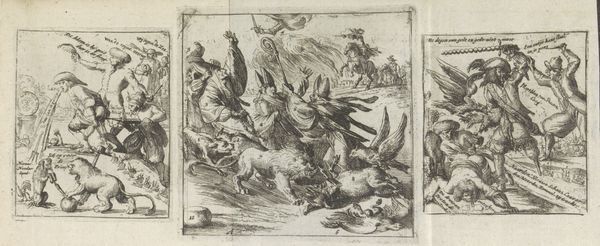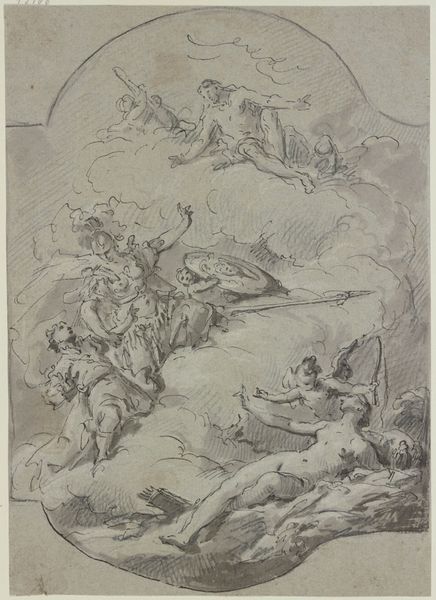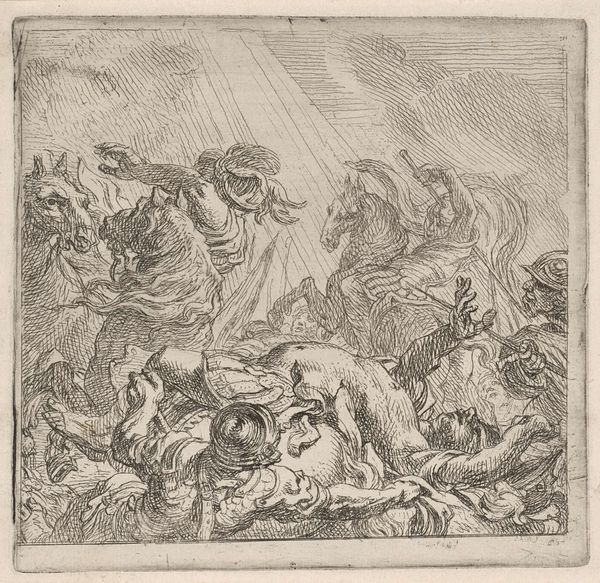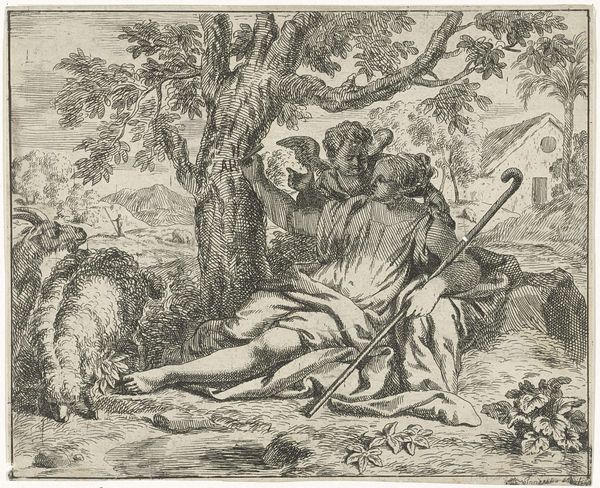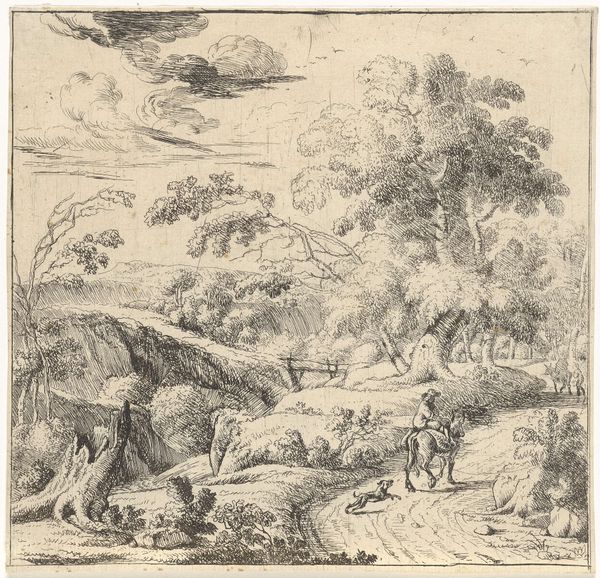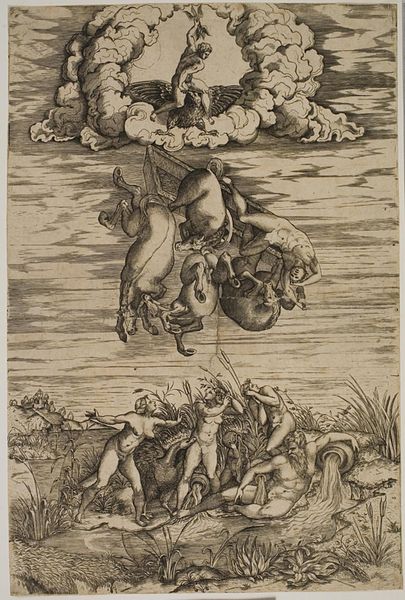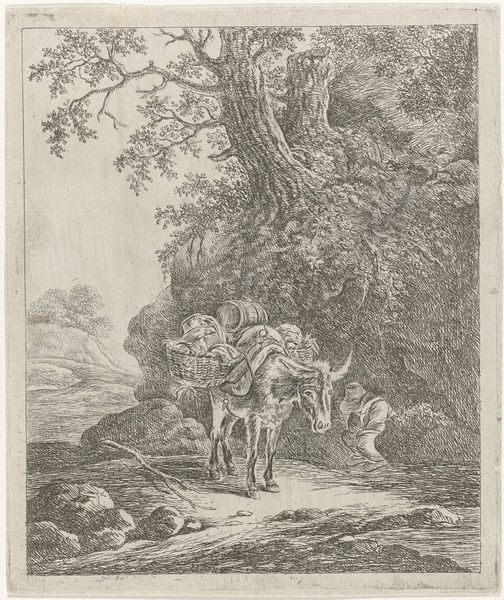
#
pencil drawn
#
toned paper
#
light pencil work
#
pen sketch
#
pencil sketch
#
ink drawing experimentation
#
pen-ink sketch
#
pen work
#
pencil work
#
sketchbook art
Dimensions: height 162 mm, width 174 mm
Copyright: Rijks Museum: Open Domain
Editor: Here we have Jacob Herreyns' "Venus vindt de dode Adonis," created sometime between 1671 and 1732. It's a delicate sketch, seemingly pen and ink on toned paper. There’s a real sense of theatricality, almost like a stage design. What kind of stories do you think this piece is trying to tell us? Curator: Considering its mythological subject, that theatricality you observe points to the importance of visual culture during this period. Prints like these, affordable and reproducible, served as crucial tools for disseminating narratives and ideals. Venus's grief over Adonis was not just a sad tale; it symbolized broader anxieties around mortality, loss, and even perhaps, the transience of power and beauty itself, particularly in a courtly context. Editor: So, it’s not just a picture; it’s almost a commentary? Curator: Precisely. Think of the role that mythological paintings and prints played in reinforcing social hierarchies. Who got to depict these stories, and for what audience? Herreyns likely understood his market and shaped his art accordingly. Consider also the visual rhetoric - Venus is always shown as ideal of beauty; is this subverted at all here? Editor: That’s really interesting! It makes me consider where this artwork was shown, and who had access to it at the time. Thanks for the deep dive. Curator: It's precisely these questions that breathe life into historical artworks and makes them worth analyzing today!
Comments
No comments
Be the first to comment and join the conversation on the ultimate creative platform.
